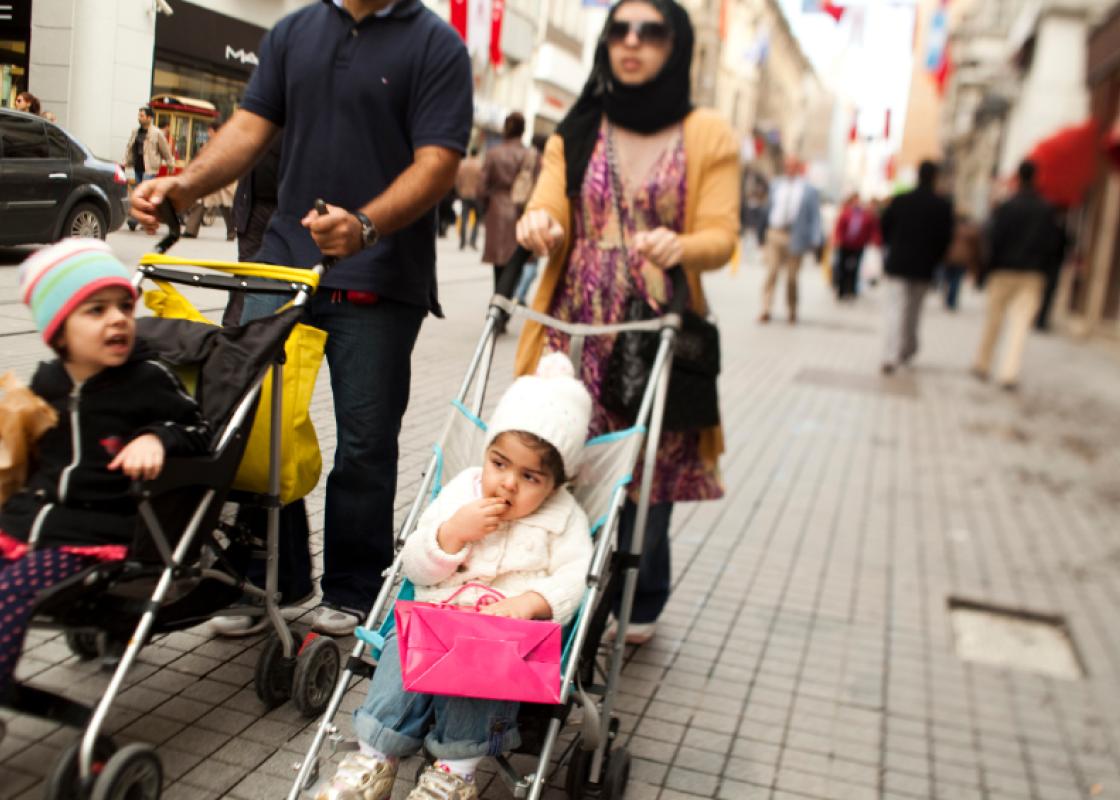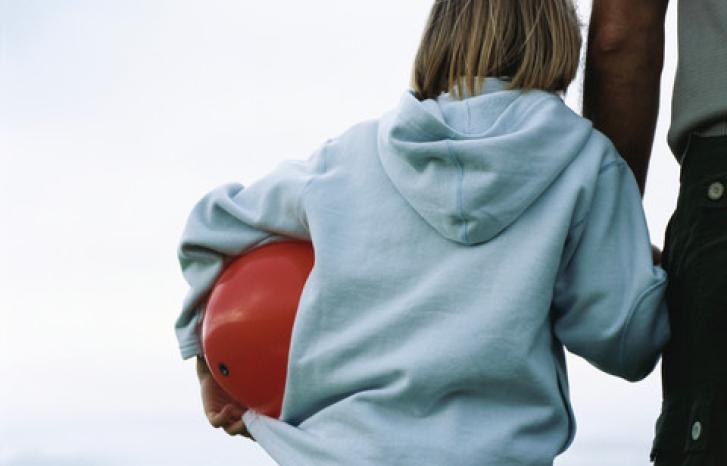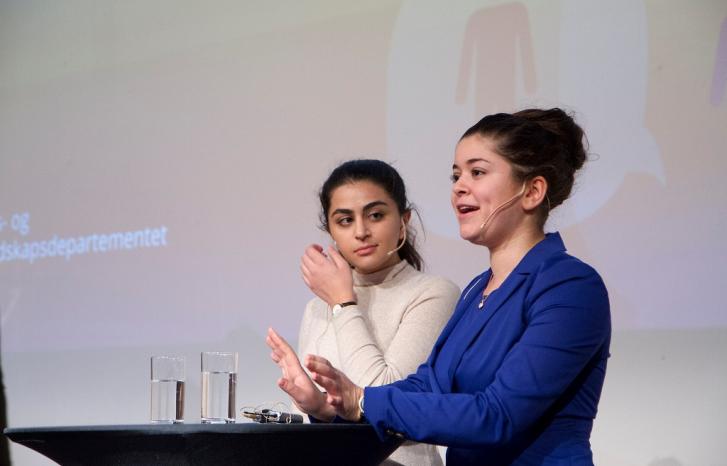Researcher Tone Gunn Kristiansen did not actually inquire about gender equality when she interviewed 15 employees at the Child Welfare Service in Norway. All she did was ask them to prepare two cases concerning work related to families with minority background. However, gender equality became a central issue in all the interviews.
“We had to explain to them that in Norway both parents are considered equal and they both have the same responsibility for their children”, one social worker said.
“I had to explain that this is a gender equal country, and that demanding that your wife stays at home and beat her if she doesn’t is unacceptable”, another one said.
The fact that not all Norwegian parents are equal in reality and that some Norwegian men also beat their wives is not part of the conversations in the Child Welfare Service. It is an idealised version of Norwegian gender equality that matters here.
Kristiansen calls the employees at the Child Welfare Service “grassroot bureaucrats implementing gender equality politics”, in her thesis Kjønnslikestillingens tvetydigheter i det flerkulturelle barnevernet (“The ambiguity of gender equality in the multi-cultural Child Welfare Service”).
The 15 interviewees found that the problems they faced with the minority families were a result of inequality among the parents. Poverty was never mentioned. Bad economy and difficulties getting work were not social problems, they were problems related to gender equality. Thus the solution was simple: to become equal, as we are in Norway.
The Child Welfare Service vs. the minorities
The interaction between the Child Welfare Service and families with minority background has been subject to much public debate over the past years. The media have reported cases where families with immigrant background send their children out of the country in order to avoid the Child Welfare Service.
Immigrants and children of immigrant parents are, according to figures from Statistics Norway, overrepresented in Child Welfare cases. The Child Welfare Service has been critisised for being too culturally sensitive and for being too little culturally sensitive.
A survey from 2004 showed that two out of three social workers found it more difficult to cooperate with families with minority background than with ethnic Norwegian families.
“They are very concerned with the fact that they experience great difficulties in dealing with the minority families in what I’ve called ‘the white Child Welfare Service’. But they continue to work and think in the same manner as before,” says Kristiansen.
She believes that it’s time to stop explaining these conflicts by pointing at the minority families and start focusing on how the Child Welfare Service acts in these situations.
To be gender equal as Norwegians
Based on her interviews with employees at the Child Welfare Service, Kristiansen has discovered three ways in which the Child Welfare Service relate to gender equality and minority families.
She calls the first way “normality oriented”. Here, the social worker is concerned with telling the family how things are done here in Norway. Both parents have to work – it is vital for integration – and mother and father contributes equally at home with both child care and house work.
“The emphasis is on equality. And focus is on the grown-ups, on how to integrate them in society”, says Kristiansen.
Within this perspective clear boundaries are drawn between “the equal us”, and “the unequal others”, and in order to fit into Norwegian society one needs to learn how to do things our way.
See also: Children of immigrants choose gender equality
Concerned about the girls
The other perspective resembles the first, but there is one significant difference: The parents’ culture is regarded as constant and homogenous, is often referred to as “non-western” and is triggered by visible cultural differences such as attire. The values of other cultures are regarded as inappropriate and inferior to Norwegian values.
Kristiansen calls this perspective “culturally oriented”.
“Those who assume this position are particularly concerned with the girls. They talk a lot about culture and cultural differences and of the other cultures’ lack of freedom. Then it becomes clear that they are particularly worried about the girls.”
The girls are regarded as oppressed because they are raised within a culture which has the “wrong” view on gender and childhood. On the other hand, the boys are regarded as free even though they, too, are being raised within an “oppressive, non-western” culture.
That the Norwegian society may contribute to restrict the minorities’ opportunities was not an issue within the culturally oriented perspective.
An African woman who told the Child Welfare Service that she had experienced racism, was asked what she thought would happen if a white woman came to a village in her home country. “Would they not perhaps push her away because she was a stranger? ” the social worker had asked. Yes, that was probably true, the mother admitted.
The social worker concluded that it probably wasn’t racism after all, it was just that people were not used to strangers. She thought the woman had done well in answering the question correctly.
“Admitting that one has experienced racism does not fit into this perception of reality. The social worker turns the skin colour into a symbol of something strange and unfamiliar, and all colours are initially neutral”, says Kristiansen.
Universal model with gender hierarchy
The first two perspectives are both ethnocentric – they are based on the view that Norwegian culture is superior in terms of values and that the way things are done in Norway is the best way, Kristiansen explains.
“The model of a good and gender equal family life was not regarded in terms of Norwegian society’s specific historical, material and ideological conditions, but rather as a universal model of best.”
“This may be regarded as a white, privileged position which allowed the Child Welfare Service to invoke a universal model of gender equality,” says Kristiansen.
According to the social workers’ narratives, Norwegian women are equal per se. Women with minority background are involuntarily oppressed and needs to be liberated by the Child Welfare Service, which represents the good Norwegian welfare state.
Men with minority background are oppressors, and there is very little one can do about them. The Norwegian man is rarely mentioned, but implicitly he is a gender equal man and an example to follow.
Several types of equality
Dialogue was important in the third perspective. Kristiansen calls this perspective “negotiation oriented”.
“They are concerned with acknowledging other ways to do things. To them there is not just one type of gender equality, and they recognise that even in Norway families do things differently. This must also apply to minority parents,” says Kristiansen.
“They are willing to negotiate with the parents in order to gain an understanding.”
Whereas those who were concerned with culture and Norwegian norms of gender equality disregarded the men with minority background, the negotiation oriented wanted contact with the men and wanted to involve them in the discussion.
Time was also an important issue. Several of the cases in Kristiansen’s study are about people who have recently arrived in Norway. Given time, they would, according to the negotiation oriented, understand how things are done in Norway.
“This was a more acknowledging approach. They accepted the differences, at least for a while.”
See also: Justifying gender equality through Islam
Ambiguous gender equality politics
“Someone who wants to negotiate is more appealing compared to the ethnocentric approaches. However, the negotiation oriented could easily take on a position where everything was OK and thus contribute to strengthen the gender roles by not challenging them,” says Kristiansen.
“If you tell the mother that it is OK for her to stay at home and that we won’t push her to take Norwegian classes if she doesn’t want to – what consequences will that have?”
Moreover, the Child Welfare Service relates to official Norwegian gender equality politics which, according to Kristiansen, is ambiguous. On the one hand the ideal concerning equality prevails, where both men and women are obliged to provide for themselves and share the duties at home. On the other hand there is the idea that the mother is more important to the child.
For instance, the social workers’ motivation for getting the mothers to participate in Norwegian classes was not motivated by qualifying them for work. It was in order to make them better equipped to look after the children and the home in a Norwegian society.
Gender ignored
Kristiansen’s study shows how gender and gender equality is vital in terms of the social workers’ perception and treatment of minority families. Nevertheless, gender is most often ignored both in Norwegian research on the Child Welfare Service and in official reports and legislation.
“The Child Welfare Service tends to skip gender in their discussions and focus primarily on how to deal with cultural differences,” says Kristiansen.
“They do not realise that they are contributing to the creation of hierarchies between the Norwegian ways to do things and ‘other’ ways, simply because they do not consider gender in their discussions regarding the multi-cultural.”
A societal problem
Kristiansen does not want to contribute to what she regards as heavy stigmatising and critique of the Child Welfare Service and its social workers over the past years.
Furthermore, the 15 interviewees are not placed within different categories. One person could represent both a negotiation oriented and an ethnocentric position.
If the social workers were to challenge the prevailing ideas concerning Norwegianness and gender equality, they would also have to challenge the principle of neutrality in the Child Welfare Service and the view that the way things are done in the Norwegian welfare state is the best thing for everyone.
Kristiansen believes that such tendencies are present, particularly within the negotiation oriented perspective. There is opposition, says the researcher, but it is not yet prominent.
“Social workers are part of the social discourse, like everybody else. But they are also the final link in the implementation of the politics of the welfare state. Their mandate regulates their work, and how much room they have to challenge the prevailing ideas. But there is room for it.”
Translated by Cathinka Dahl Hambro.
Tone Gunn Kristiansen recently defended her PhD in sociology at the Faculty of Social Sciences, the University of Nordland, with her thesis Kjønnslikestillingens tvetydigheter i det flerkulturelle barnevernet (“The ambiguity of gender equality in the multi-cultural Child Welfare Service”).



